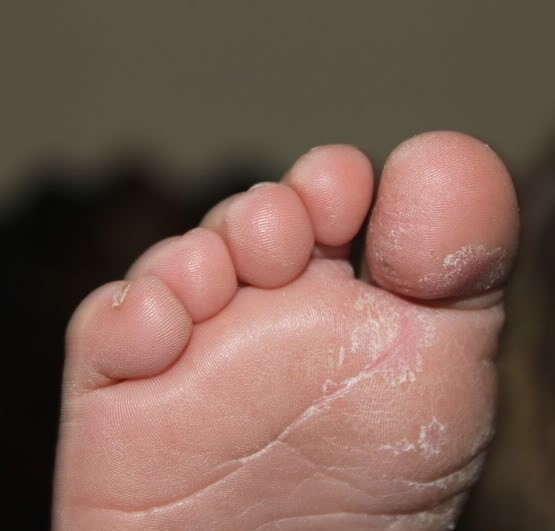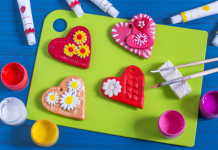Athlete’s foot is a fungal infection. The name is such because athletes have a chance of getting infected. That does not mean that it can never affect your child. This kind of fungus often grows in moist and warm places. So places near public shower or pool are very likely to be contaminated with that kind of fungus. Walking barefooted on those areas might expose your child to the risk of athlete’s foot.
Athlete’s foot is very common among children who are into sports and swimming. So, for that reason you need to know certain home remedies in order to treat the athlete’s foot of your child.
Signs & Symptoms of Athlete’s Foot
Your child might get really uncomfortable before he/she starts having an athlete’s foot. He/she will have difficulty walking or running. The following are the common symptoms:
- Bumps of one foot or both
- Cracked feet
- Blistered feet
- Redness and scaling of feet
- Scaly flakes between the toes
- Unpleasant odor
- Rash in the inner part of the feet
- Raw skin scaling out
If you find these symptoms and signs in your child, then there is a probability that he/she might be suffering from athlete’s foot.
Home Remedies & Precautions
Precautions are always better than cure. That is why it is advisable that you adopt home remedies to treat athlete’s foot in your child. There are certain things you must do to make sure that he/she does not suffer from this dreadful infection. Otherwise, it will cause them a lot of suffering. This is the list of simple things you can do to ensure that your child does not suffer from athlete’s foot:
Washing of Feet
Whenever your child comes back from play or school, make sure that he/she washes the feet. Wash with warm water and soap. Make it into a habit. If he/she is wearing a tight shoe with socks, wash it even more thoroughly. Washing helps to clean the infection away.
Dry the Toes
After washing the feet, make sure that their feet is dried properly. Dry them with a dry and clean towel. Clean the area between the toes, properly. Make sure that the toes are completely dry and no drop of water is left behind.
Let them be Barefoot
Sometimes, during the night, let them walk barefoot in the house. This will allow their feet to breathe. It will dry off any kind of remaining moisture. Feet which can breathe are less likely to suffer from any kind of fungal infection.
Avoid Tight and Synthetic Footwear
Since your child is more susceptible to fungal infection, avoid making them wear tight shoes. Synthetic shoes also make the feet sweat a lot more than regular shoes. This will keep your child’s feet moist all day. Moist feet are more likely to catch the infection. Give them footwear which allows airspace and allows the feet to breathe.
Make them Wear Sandals near Pools
When they are going for a swim, then make them wear sandals instead of closed shoes. Sandals offer much more breathing space than regular shoes. Plus it also helps their feet to dry naturally, without accumulating any kind of moisture, between the toes.
Choose Cotton Socks
Choosing the right kind of sock for your kid is very important. If your child has to wear shows, all day long, then the material of the sock should be such that will absorb the sweat. In that way, it will help your child to keep his/her feet dry. Socks which fail to absorb the moisture tend to create smelly feet and ultimately infections.
Change the Socks often
Ideally you should change your child’s socks every day. However, if it is not possible, change at least thrice a week. This will help them maintain the desired level of hygiene. Socks, even the cotton ones, absorb a lot of moisture, throughout the entire day. In that way the socks themselves get infected with the fungus. So, when the next time your child wears them, his/her feet also get infected. This is a major problem. Wearing a dry and clean pair of socks, everyday, helps to keep athlete’s foot away.
Use Antifungal Powder
There are many antifungal powders available in the market. You should put them in your child’s shoe or sneakers. This will kill any sort of fungus nesting inside your child’s shoes. In this way the chances of infection lessons by a million times. You can change the socks but you cannot change the shoes, ever day. So, in order to keep the shoes protected from the deadly fungus, you must use such powders.
Set the Shoes out in the Sun
On their week off, or on the days when your child is not wearing the shoes, set it out under the sun. This will also help you kill all the germs inside. Sun rays are very effective in killing all kinds of bacteria and fungus. Also you can spray a disinfectant to make sure that the shoes are really freed from the germs. So, in this way, the next day your child wears the shoes, you make sure that they are free from any kind of bacteria or fungus.
Tell them Not to Share Foot wears
Whilst, sharing is a good habit, but sharing foot wear or things of personal use, should be discouraged. Once your child is exchanging personal stuffs like towel or foot wear, the risk of fungal contamination increases. That is because, no matter how much precaution you take, you are then left at the mercy of the sense of hygiene of the other child’s parents.
Keep your Bathroom clean and Dry
This is perhaps the most important precaution that you must take. A moist bathroom will increase the risk of fungal infection in your child’s feet. Use disinfectants and clean your bathroom. Try and make sure that the bathroom floor is clean and dry before your child is using it. In this way you can make sure that he/she is not getting contaminated while they are bathing in their own home.
When to Call the Doctors?
If the situation is already too late and your child is already suffering from the infection, then do visit the doctor. If the rashes increases and the feet swell a doctor visit is must. Sometimes, the infection will also spread to the hands. The doctor will provide you with ointments and lotions which you need to apply, in order to treat athlete’s foot in your kid.














